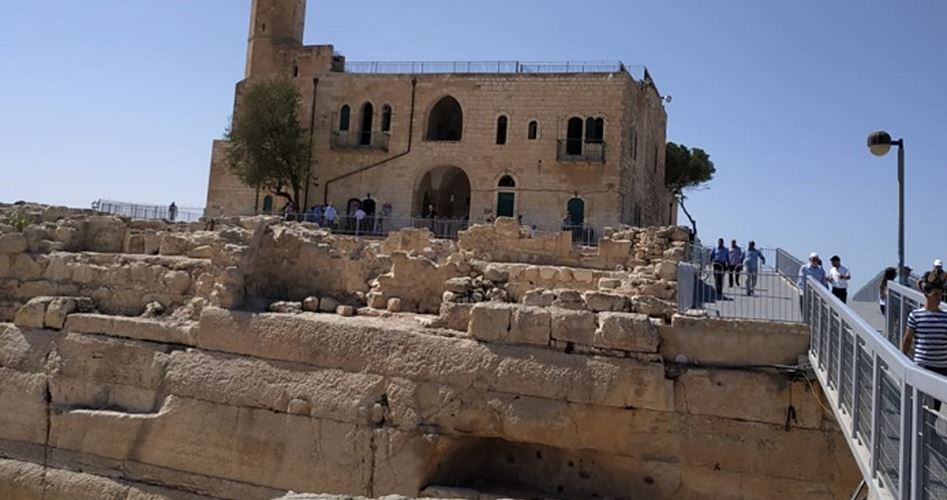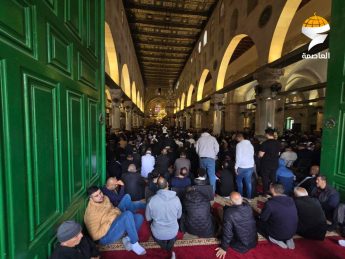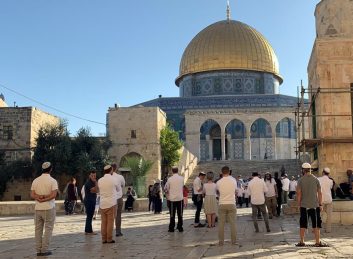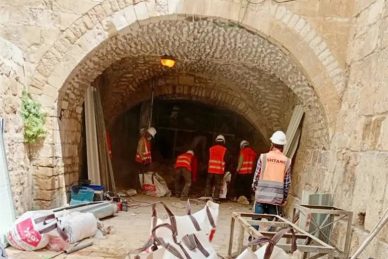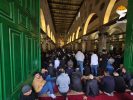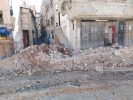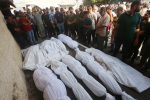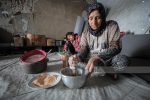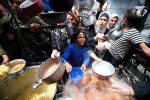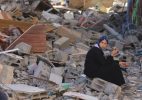The village of Nabi Samuel northwest of occupied Jerusalem has been marginalized after it has been transformed into a small prison after Israel’s construction of the Apartheid Wall in the West Bank.
The residents of Nabi Samuel who are numbered around 320 people held a few days ago a sit-in in protest of the occupation practices against their isolated village. The village’s lands were attacked and the village’s school yard was used as a parking site by settlers who visit the shrine of Prophet Samuel.
Eid Barakat a resident of the village mentioned for the Palestinian Information Center the history and suffering of the population of the village saying: “In 1971 the houses of the village around the shrine of the Prophet Samuel were demolished claiming to be old and under the threat of collapse but this claim is not true; the real objective was the search for Israeli antiques as we were transferred to houses that were 400 meters far from the village’s mosque” he said.
He added: “The Israeli occupation authorities allowed each family to build a kitchen and an external bathroom and they destroyed and prevented the construction of any other structure resulting from the natural growth in the population” pointing out that the Norwegian Foundation began in recent years to follow up the cases of demolition of houses in the Israeli courts.
Eid noted that he “received 23 demolition orders including the building of my house and even the construction of tin-roofed huts or a cesspit or a water-well” stressing that the occupation authorities prevent the construction or expansion of anything in the village.
He pointed out that in 1995 the Israeli occupation forces confiscated approximately 3500 dunums of the village’s land and turned it into a national park which includes the entire village and its surroundings including its mosque adding that residents were denied the right to build renovate or plant trees.
He said: “We tried to oppose the practices of the occupation but we were unable to do so” explaining that the only street in the village has not been paved since 1967 and three years ago we were able to pave it with the help of the Norwegians.”
A sit-in protest
Eid noted that the sit-in that was organized a few days ago came in protest at turning the entrance to the village into a parking lot for settlers visiting the shrine of the Prophet Samuel which made the entrance narrower causing a traffic crisis and thus delaying students from their schools in addition to building a wedding hall there in order to harass and displace the Palestinian population.
As for education he pointed out that the village had a one-room elementary school of 20 square meters. Later after the intervention of Jordanian Queen Rania Al-Abdullah and the Madrasati Foundation we got containers to increase the number of classrooms and we have four classrooms now with 20 students each. However the problem has not been solved as about 50 students go to study in the villages of Jib and Bir Nabala. The village also lacks a health clinic. In case of birth women go to the West Bank hospitals.
He pointed out that the Apartheid Wall separated the village from the West Bank and neighboring villages such as Beit Iksa Beit Hanina Al-Jib Bir Nabala and Badu which could only be reached through crossing a military checkpoint and traveling long distances. “No one can visit us except very close friends first degree-relatives and through coordination with the Israeli side only.”
Eid called on the Palestinian Authority to pay attention to their forgotten village and reduce unemployment among its population stressing that the residents will not leave their village so as not to allow the occupation to confiscate their land.

